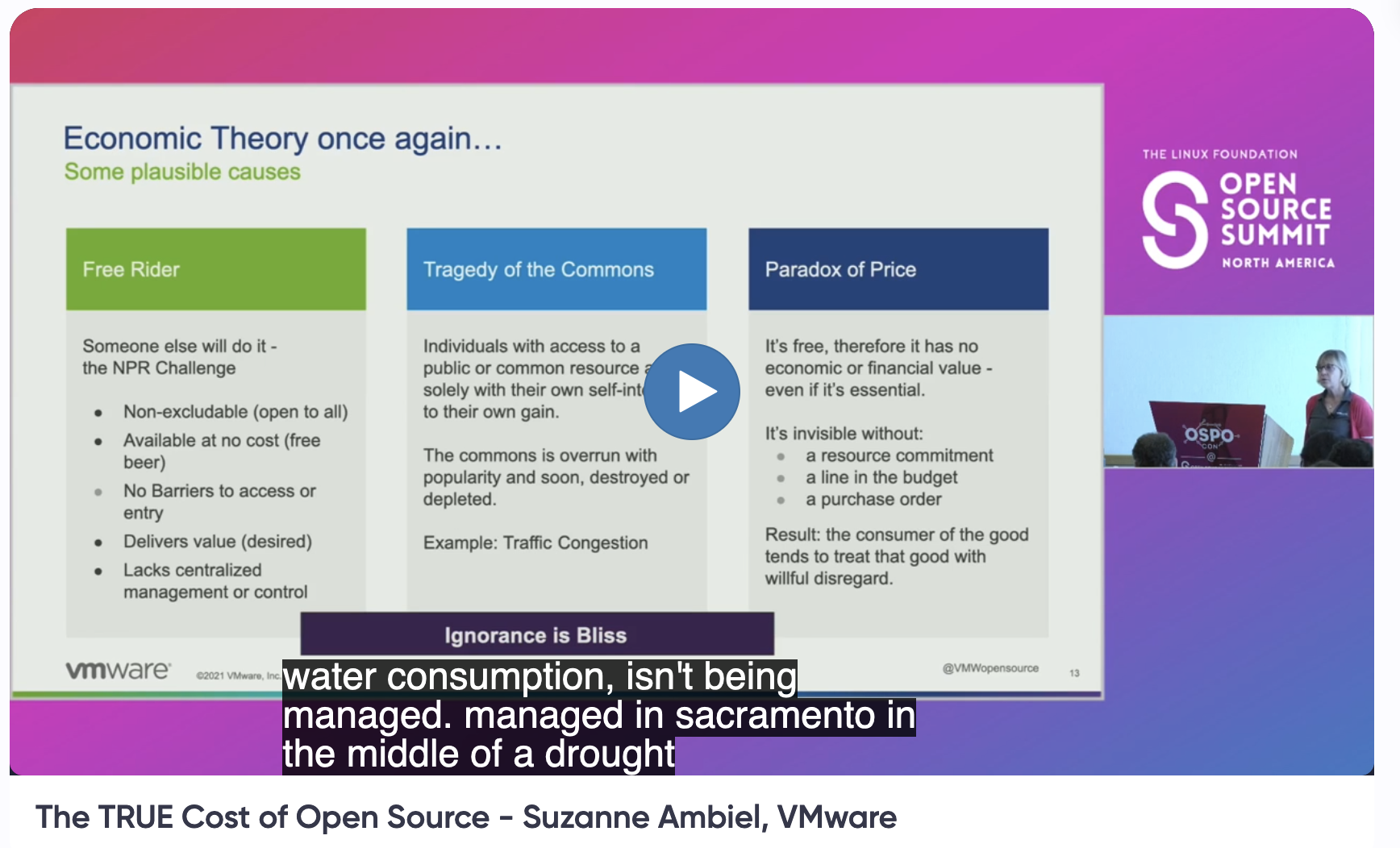Suzanne Ambiel
There is a declared preference for open source. Source: The value of open source in the cloud era; andy oram, oreily media/ibm
IDC Research says “75% of modern apps include external components. External components were 40-80% of the total size.”
Open source: “Good enough for the CIA and the Vatican — at the same time!” - Brian Behlendorf.
Consumption/adoption is rising, but contribution is flat. Plausible reasons:
-
free rider (e.g. NPR)
-
tragedy of the commons (traffic congestion)
-
paradox of price (because you didnt have to pay for it, you don’t see the value; water meter) - Sacramento doesn’t have a water meter so there’s no awareness. If you can visualize it.. you can better think about it.

“Balancing makers and takers to scale and sustain open source” https://dri.es/balancing-makers-and-takers-to-scale-and-sustain-open-source
https://blogs.vmware.com/opensource/author/dawn-foster/
Risks:
- Is the project owned by a BDFL? company? Foundation?
- Are there adopters? (more users = lower risk)
- Security: documented processes, how decisions are made, etc.
- Tech debt: “the further from source (e.g. latest), the higher your technical debt and the debt compounds FAST”
If 80% of your code is open source, and you’re not inventorying your open source.. 80% is a hell of a blind spot.
“Risk” is cost in disguise.
- needs to be paid in the future
- unknown magnitude
- must be paid
- may one day be a large part of your budget
Questions:
- What are we using?
- Where are we using it?
- Are we complaint?
- Did we choose this open source with intent? Or accidental?
- Do we have an open source consumption strategy? Purposeful, documented choices. (OSPO can help w/ this decision framework)
- How close to the source are you (versions, patches, etc)?
- Is this a strategic choice? How do you know?
- If yes, what sort of commitments are we making to protect that investment?
vmware keeps a list of strategically important open source projects.
Things to do as users:
- Identify essential/strategic open source.
- Read the contributor’s guide
- Study recent PRs & updates
- Introduce ourselves and say thank you.
- Ask how we can help.
For projects:
- update contrib guide
- make it easy (good project hospitality)
- good communication channels (email/slack)
- Be explicit about asks for help
- include tag of “good first issues”
- publish your roadmap